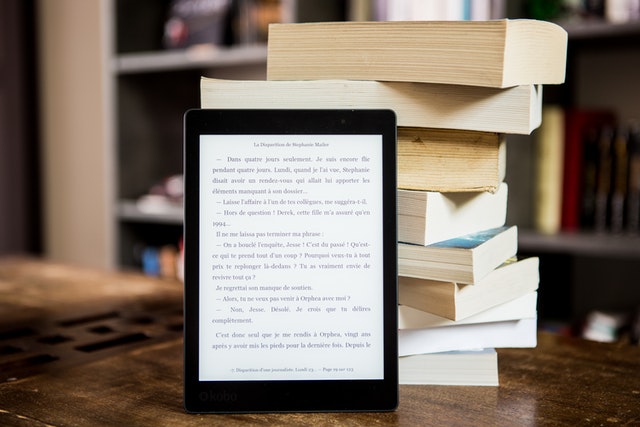It baffles me that there are still authors, intelligent professionals who want to reach an audience, yet who do not use the most effective and cheapest way of doing that — ebooks.
Last Saturday, I participated in the first Ottawa Book Fest held by the National Capital branch of the Canadian Authors Association. While it wasn’t what I hoped for in terms of selling books or engaging with readers, I did enjoy talking with many other local authors. Two things struck me: the number of authors who don’t bother with e-books, and the number who use expensive “publishing services” companies — vanity publishers.
“You can’t wrap an e-book,” was one typical comment. True, there is something very appealing about the tactile experience of holding a book. That’s one reason I went to the trouble and expense of getting paperbacks of my own titles.
Paper has a number of advantages over e-books. I will take a paperback to the beach or poolside, but I hesitate to bring my iPad there. It’s hard to read my iPad in bright sunlight (although the E-Ink screens of the Kobo, Kindle and others don’t have this problem). If you drop a paperback or get it dirty, it’s no big deal. At worst, you might have to spend ten to fifteen dollars to replace it. Or maybe $50 for a big hardcover. If I were to drop my iPad in the bathtub, that would be a major disaster.
And yes, you can wrap up a paperback book and enjoy the recipient opening it.
On the other hand, the e-book’s advantages include:
- they’re lighter, important when travelling
- they shouldbe cheaper — the publisher doesn’t have to pay for paper, ink or shipping
- it’s a lot easier to give copies to people who are not in the same room with you — or the same country.
Let’s look at some facts.
-books outsell paper books. More than two years ago, Amazon reported that its sales of e-books had surpassed paper books, and while that’s just one (the biggest in the world) outlet, the Association of American Publishers also announced that e-books outsold hardcovers in the adult fiction category as of 2011. E-books are the fastest growing sector of the book market, and even though the AAP reported that growth slowed in 2013, it was still growing and hit $800 million, while sales of paperbacks fell to $898 million.
As Hugh Howey pointed out on his blog (which I referenced in my post in February), the book e-tailers don’t report their sales numbers. That means those numbers do not include any self-published e-books, which according to Howey’s research, outsell all the e-books from all Big Five publishers combined.
Why limit yourself?
E-book technology sparked an explosion in the number of independent authors self-publishing books. It’s an enabling technology.
And it’s not difficult to use. It helps to know about publishing, but if you can create a word processing file, you can create an e-book. Not necessarily a good e-book, but that’s a different discussion.
That’s why it astounds me to hear writers denigrate the e-book format. For an author to choose not to publish an e-books would be like a travel agent choosing not to book air travel and sell train tickets only. Sure, there’s a market for train travel, and trains can be more romantic and evocative than airplanes, but that choice severely limits the travel agent’s career.
Need advice? Ask me
Some writers may feel intimidated by e-books and the need to learn a new format. But as I said, it’s easier to format an e-book. There are plenty of free resources on the net, in the blogosphere, even on Facebook. Mark Coker’s excellent and free Smashwords Style Guide gives you step-by-step instructions, with lots of time-saving tips.
Or ask another author who has gone through the process. Most are happy to share what they’ve learned. For free. Ask me.
If you still feel unsure, or want to get someone to produce your e-book for you, then I’ll certainly charge a lot less than any vanity publisher.
If we work together, we’ll all succeed.

